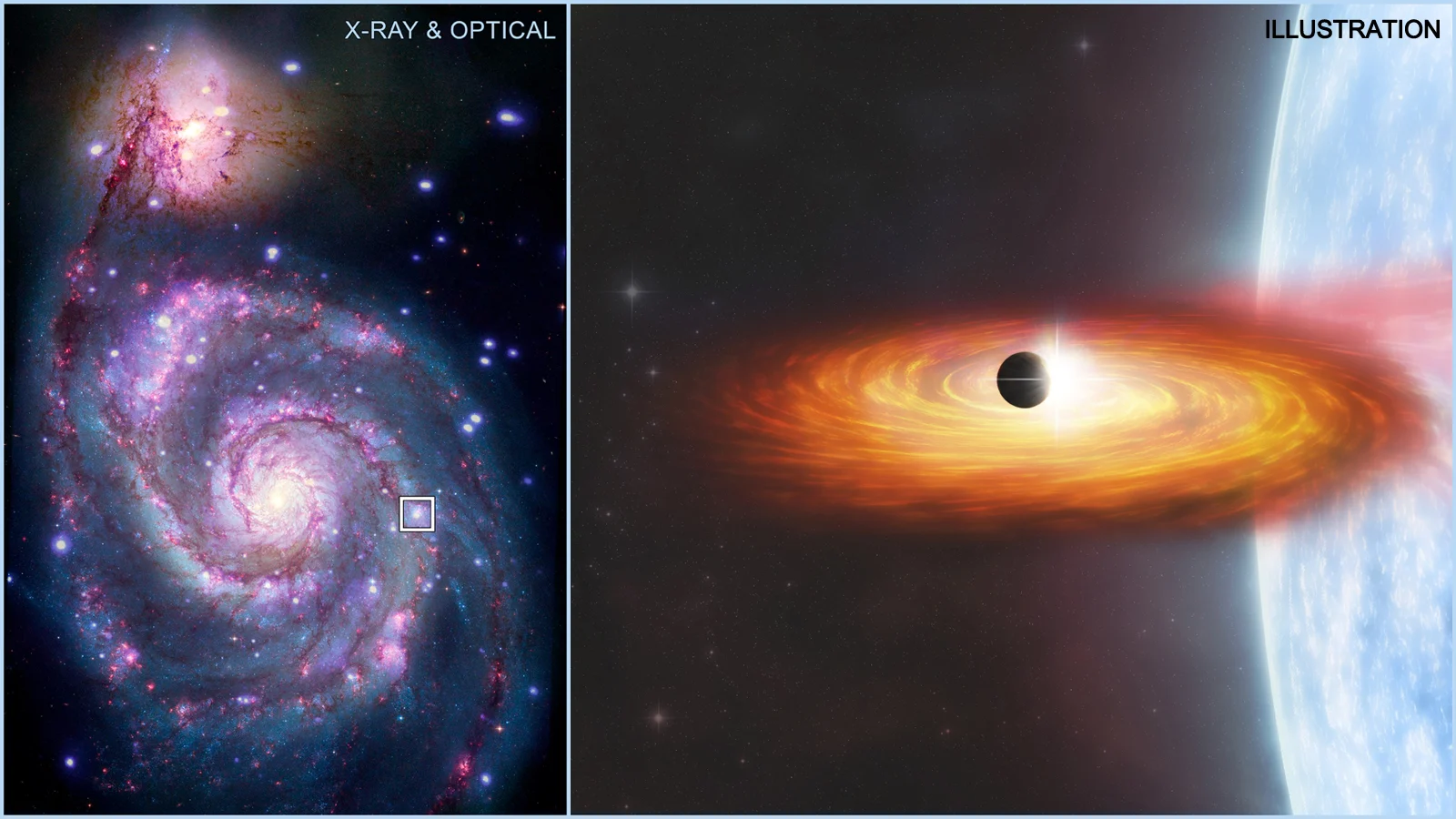
Astronomers may have spotted signs of an alien planet in a distant galaxy
"We know we are making an exciting and bold claim so we expect that other astronomers will look at it very carefully," said one researcher. "We think we have a strong argument, and this process is how science works."
In a remarkable discovery, astronomers using NASA's Chandra X-ray Observatory may have found a planet. The extraordinary part is that this planet's parent stars are located around 30 million light years away in another galaxy.
One of NASA's Great Observatories, Chandra has been orbiting Earth for over 22 years now. From its vantage point in space, Chandra detects intense x-ray radiation that is blocked from reaching telescopes on Earth's surface by the atmosphere. As a result, it has allowed astronomers to study the most energetic objects and events in the universe and has led to some fantastic discoveries.
This week, "exoplanet hunter" may have just been added to Chandra's résumé.

This artist's illustration shows the x-ray binary system M51-ULS-1, with a Saturn-sized planet beginning to transit in front of the x-ray source. Credit: NASA/CXC/M. Weiss
Many of the extra-solar planets (exoplanets) that we know of were found by NASA's Kepler Space Telescope and Transiting Exoplanet Survey Satellite (TESS). Both of these telescopes look for exoplanets by watching for transits. Essentially, they stare at a grouping of stars for some period of time and keep meticulous records of their brightness during that time. If any of them experience a temporary dip in brightness, it may be due to a planet passing in front of that star. If multiple dips are seen from the same star at regular intervals, chances are they've discovered one or more planets.
Kepler, which was deactivated in 2018, limited its observations to visible light. TESS collects visible and infrared light. However, it may be possible to detect exoplanet transits using other wavelengths, too. Depending on the telescope, this could even expand our detection range since higher-energy wavelengths of light have a better chance of reaching us from farther out in the universe. Therefore, an x-ray telescope like Chandra could become an effective way of discovering distant exoplanets, at least those that may be orbiting around x-ray sources (such as black holes and neutron stars).
This is what a team of researchers led by Rosanne Di Stefano from the Harvard-Smithsonian Center for Astrophysics tried to determine.
"We are trying to open up a whole new arena for finding other worlds by searching for planet candidates at X-ray wavelengths, a strategy that makes it possible to discover them in other galaxies," Di Stefano said in a press release on October 25.
In a new study, Di Stefano and her team collected 10 different observations of galaxy m51 using Chandra, taken between 2000 and 2018, and looked for 'transits' in the data.
Of those ten, one appeared to have a hit from the bright x-ray source known as M51-ULS-1, located in one of the spiral arms of the Whirlpool Galaxy.
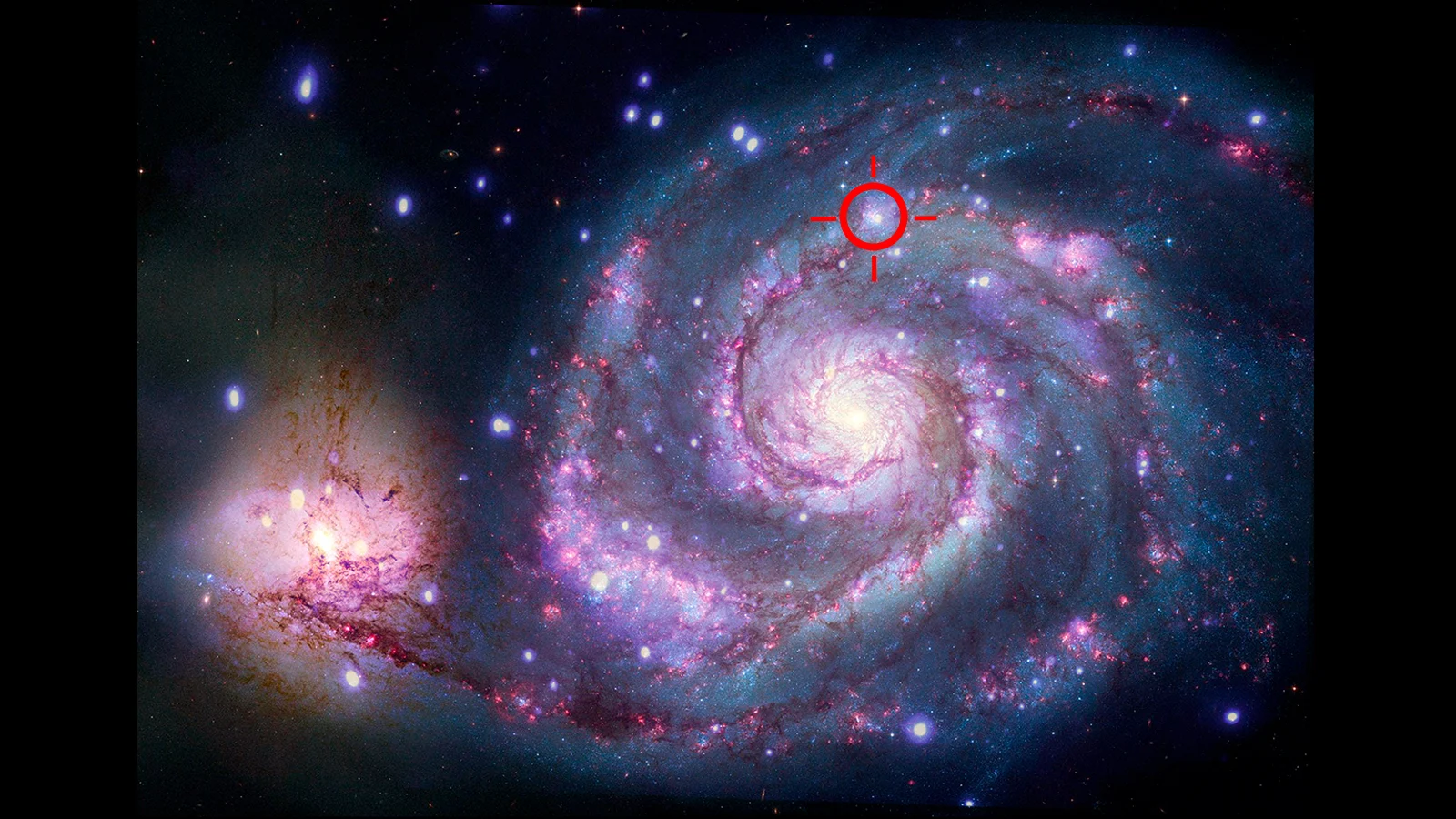
This image shows the Whirlpool Galaxy, m51, combining both optical and x-ray observations. The x-ray source M51-ULS-1 is at the centre of the red target. Credit: X-ray - NASA/CXC/SAO/R. DiStefano, et al.; Optical - NASA/ESA/STScI/Grendler; Target - S. Sutherland
M51-ULS-1 is an x-ray binary. Once, two giant stars were there, circling one another until one of them ran out of fuel in its core and exploded. In the aftermath of the supernova, a compact neutron star or a black hole was left behind to orbit with the remaining blue giant star. The x-rays from this system come from a stream of matter the stellar remnant is pulling off its companion. As the matter spirals towards the neutron star or black hole, it heats up until it emits x-rays out into the universe.
During the 60 or so hours when Chandra was pointed at M51-ULS-1 on September 20, 2012, over the course of about 3 hours, the brightness of their x-ray source diminished down to zero and then came back, continuing on as it had before.
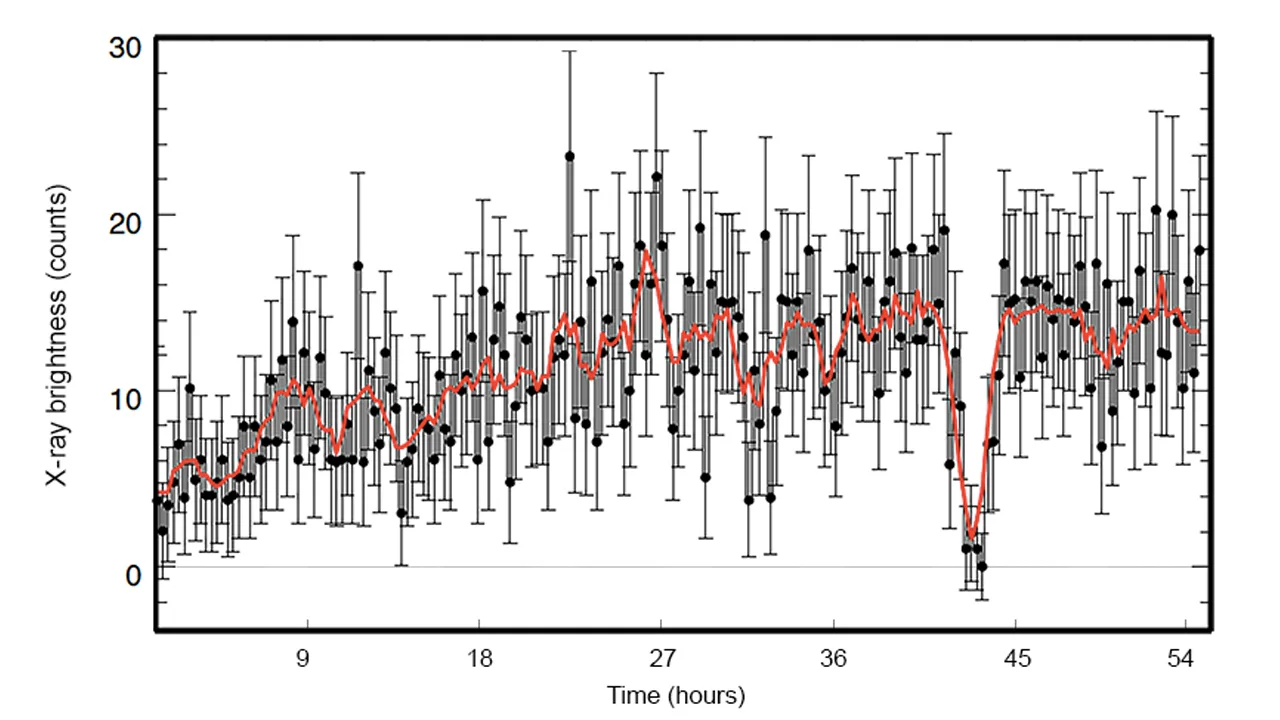
This graph shows the intensity of the m51 x-ray source the researchers were observing. From around 41-45 hours of the observations, the intensity drops to zero and returns. This behaviour is very similar to the 'light curve' of a transiting exoplanet. Credit: NASA/CXC/SAO/R. DiStefano et al.
According to their study, nothing had changed with the source or its companion star that could explain this brief interruption of the x-ray stream.
However, the pattern of the interruption was very reminiscent of an exoplanet transit. Also, the fact that the x-ray intensity dropped all the way to nothing indicates that it likely was something solid blocking the x-ray source.
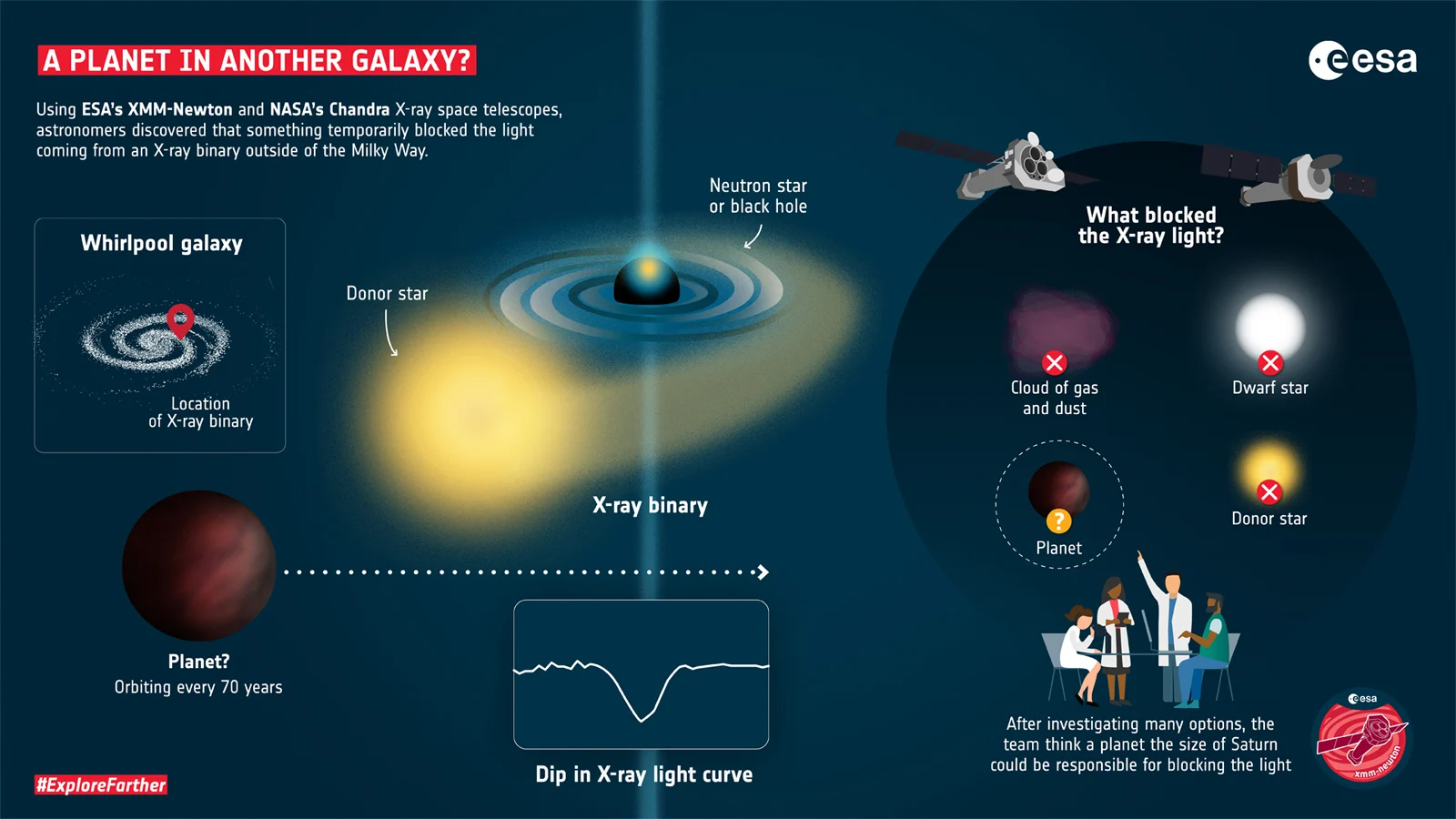
This infographic explains the details behind this potential discovery. Credit: ESA
From the data and the modelling they performed, Di Stefano and her team found that the best match was a Saturn-sized planet passing in front of the x-ray source. While there might be other explanations, they don't match up as well with the observations. Still, confirming this observation is going to be challenging.
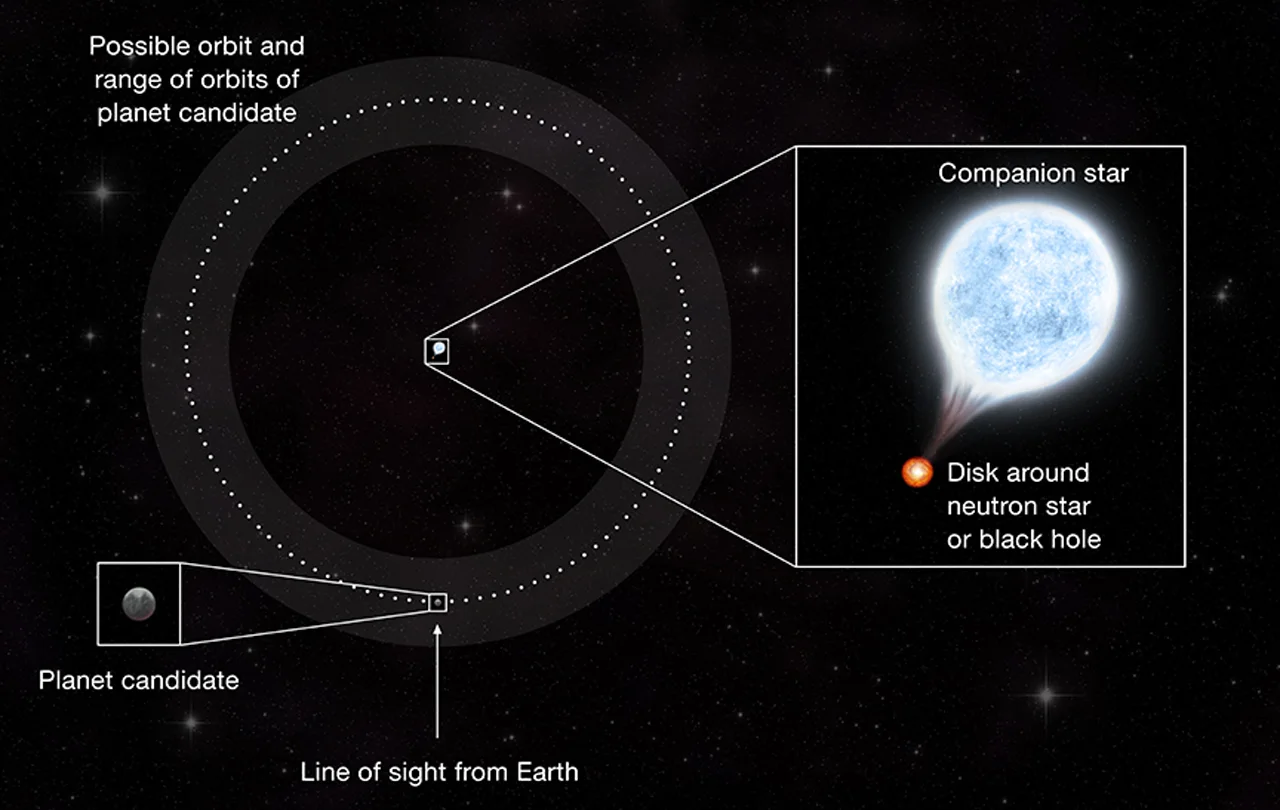
This diagram shows what the orbit of the candidate planet in the M51-ULS-1 system could look like. Credit: NASA/CXC/M. Weiss
"Unfortunately to confirm that we're seeing a planet we would likely have to wait decades to see another transit," study co-author Nia Imara of the University of California at Santa Cruz said in the press release. "And because of the uncertainties about how long it takes to orbit, we wouldn't know exactly when to look."
A FIRST FOR CHANDRA
If this is, indeed, a new exoplanet discovery, this will be the first for Chandra. It would also be the first extragalactic planet discovered via the transit method.
This isn't necessarily the first exoplanet candidate that's been discovered outside our galaxy, though.
The first detection claim dates back to 1996 when a candidate was found in the Ursirus Galaxy. Then, another candidate was discovered in the Andromeda Galaxy in 2009. Both of these candidates were detected via a method known as gravitational microlensing. Basically, this is when a planet's gravity distorts the path of the light from its parent star or the light from a star in the background. We can pick up this kind of distortion with telescopes, revealing the presence of the planet.
EXTREMELY LUCKY
Detecting exoplanets is difficult, even around the closest stars.
The planets in our solar system mostly orbit around the Sun in a disk known as the ecliptic. Mercury and Pluto are the outliers, but the others only vary by a few degrees from this plane. This happens around other stars as well. However, the ecliptics of other stars are not necessarily lined up with our point of view. The farther off the ecliptic we are, the less likely we are to see a transit.
Distance factors in here, as well. The closer a planet is to its star, the farther off the ecliptic we can be and still see a transit. For planets farther away from their star, we need to be viewing the system from close to edge-on. Also, the farther away the star is from us, the more narrow the 'cone of transit observation' is, in general. At extreme distances, you need to be viewing a system perfectly edge-on to see anything.
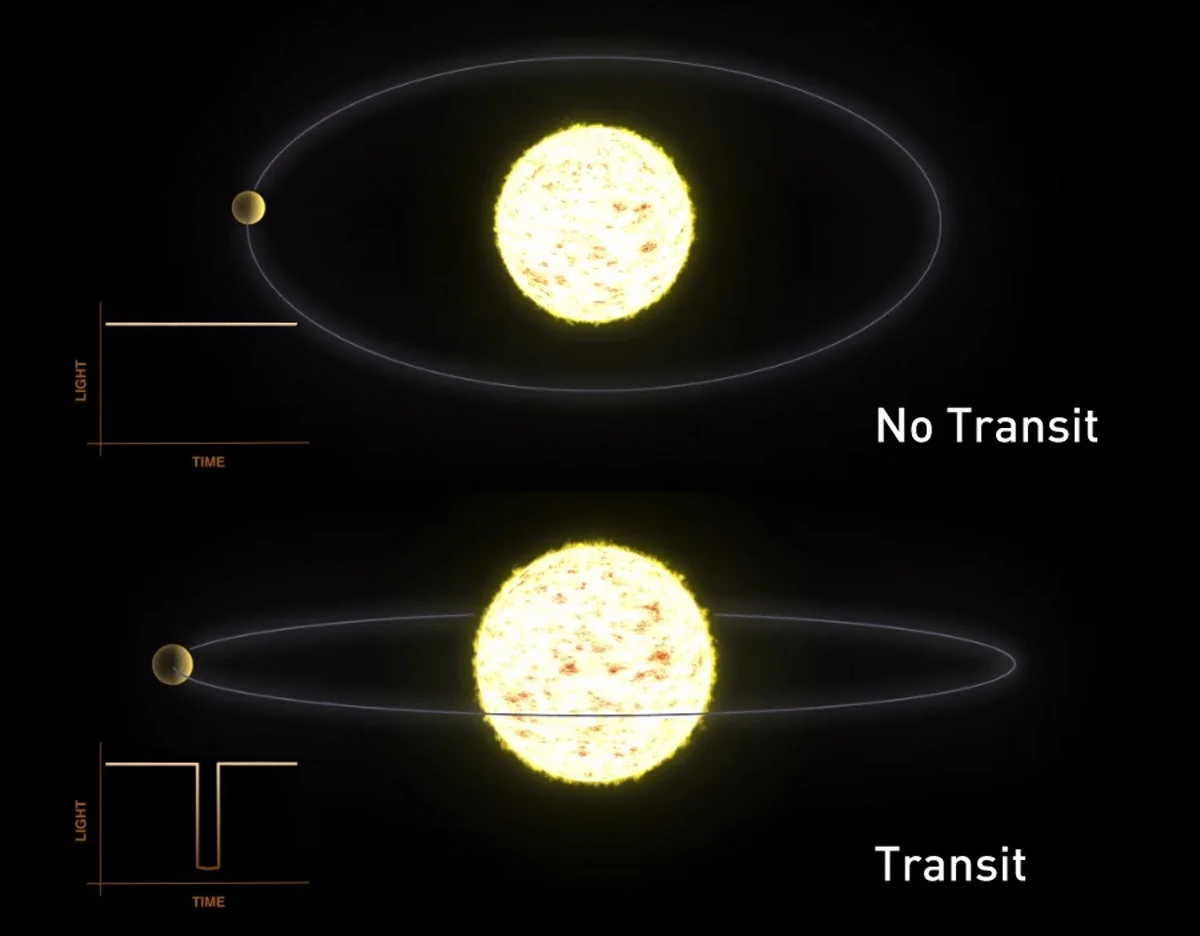
The angle of an exoplanet's orbit is crucial for us to detect it via the transit method. Credit: NASA Exoplanets
Even for those systems that have an ecliptic we see edge-on, the timing is also critical. If a planet takes 50 years to orbit its star and your window of observing that star for transits is only a few years long, you need to be extremely lucky to catch it transiting at just the right time. This is why we see so many tiny planetary systems orbiting in tightly packed orbits around their star. It's just easier for us to find them because we detect multiple transits in a very short amount of time.
If this really is the discovery of a planet orbiting around x-ray binary M51-ULS-1, it would be an example of an extremely lucky find!
This x-ray binary is close to 30 million light-years away, presenting a very narrow detection angle. Plus, the planet isn't transiting a massive star but an x-ray source that's tiny by comparison. Additionally, the planet takes about 70 years to orbit the binary, and the astronomers had only ten brief periods over a span of nearly 18 years where Chandra was viewing m51 to catch the roughly 3-hour transit.
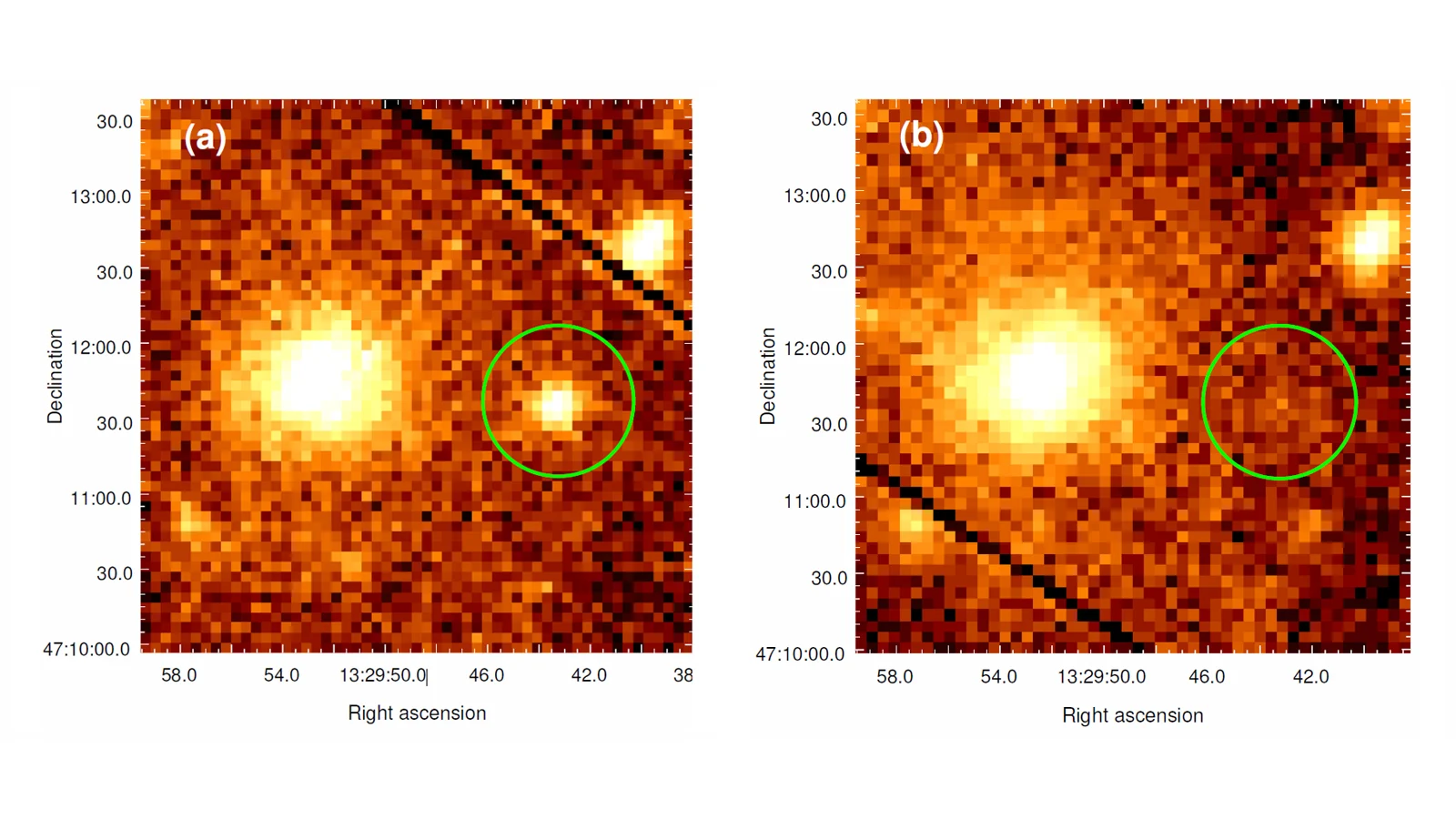
This view of m51 in x-rays shows three prominent sources. The brightest source, to the left in both panels, is the core of the Whirlpool Galaxy. The source to the upper right in both panels is likely from a background galaxy. Centre-right, M51-ULS-1 shines brightly in x-rays in the left panel but has vanished in the right panel. Credit: R. Di Stefano, et al.
So, not only did our angle to the planet's orbit need to be perfect, if the timing of the observations was off by just 15 hours or so, Chandra would have missed it!
"We know we are making an exciting and bold claim so we expect that other astronomers will look at it very carefully," co-author Julia Berndtsson, from Princeton University, said in the press release. "We think we have a strong argument, and this process is how science works."










